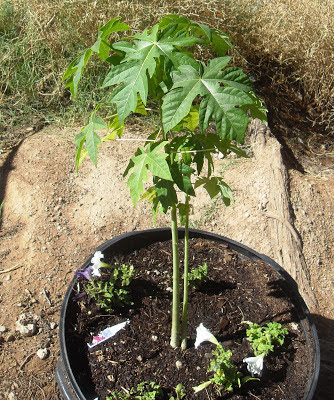In the past, I collected worms from different locations in and out of Tucson and dispersed them into my watered garden. After multiple attempts to start a worm colony in my soil, I have very rarely seen worms, even when watering my garden in the off-season. Without the aid of worms, what living organisms do I discover when I dig in the ground and in my compost? Grubs, of course.
Because grubs can often eat away at roots, causing havoc to seedlings as well as damaging root crops, my previous tendency was to dispose of them by throwing them violently against a wall. However, because my children have taken the time to spare the lives of some fortunate grubs in buckets, I have experienced a recent change of heart.
 |
| Adult Japanese June Beetle |
My change of heart transpired while I was upset at my daughter for putting my valuable compost into the grub buckets. As this blog is not devoted to my irrational behavior, I will just note that I need to make a mental impression to not be so quick to judgment. I suppose this is one example of why my wife keeps reminding me of this attribute I need to develop. In any case, once my initial anger about the compost subsided I quickly realized that she had not put any compost into the buckets. Instead, the rhinoceros beetle grubs had eaten away at the wood chips provided for them and turned it into rich compost.
Perhaps grubs can be useful after all.
 |
| Inside of Grub bucket - where the compost happens |
 |
| Compost from Grubs |
I am continuing to experiment with grubs to determine what environment suits them best, but so far I have learned the following:
1. Larger grubs are easier to work with. I can sift out the compost and leave the grubs if the grubs are larger.
2. Different varieties of beetle require a different diet in their composting environment. The large green Japanese fruit beetles prefer bedding with more nitrogen-rich foods (such as wood chips) while the very large rhinoceros beetle grubs prefer bedding that consists of more carbon-rich foods (such as horse manure).
 |
| Rhinoceros Beetle Grubs - Pretty gross! |
 |
| An adult Rhinoceros Beetle |
Should I learn any additional information concerning the rearing of grubs for compost purposes, I will gladly add it to this post.
 |
| If worms don't work - try Composting with Grubs! |




























